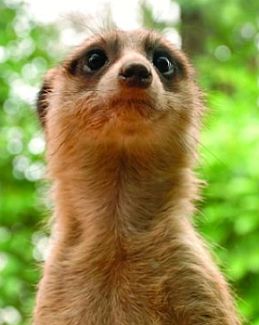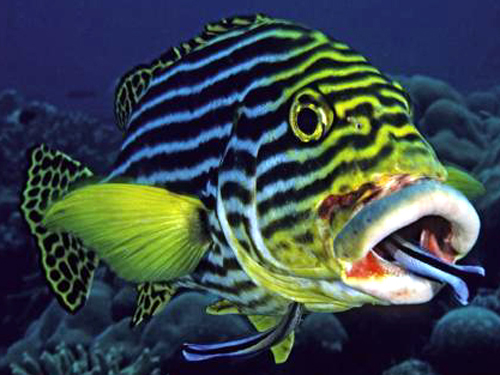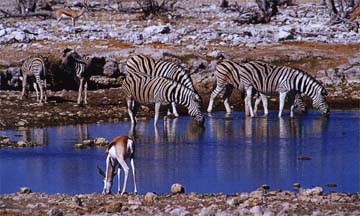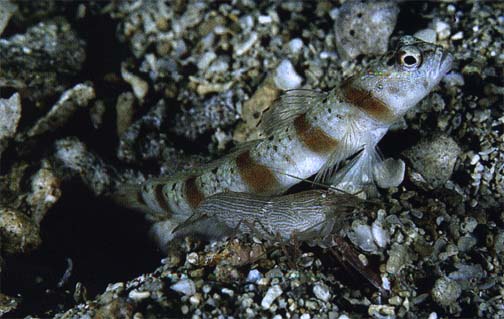Helpful animals

You wouldn’t think it would pay to be a meerkat. These mongoose-like animals from the dry regions of southern Africa will postpone meals to help with the baby-sitting, and will stay home so their family and friends can go out to supper.1
Helpful animals? Whatever happened to the evolutionary idea of ‘survival of the fittest’?
And what about the helpful ‘watchman’ bird that lets out a loud squawk when it sees a hawk approaching? All the neighbouring flocks know to fly off quickly, which confuses the advancing predator. Yet the vigilant alarm-caller puts itself in extreme danger by its conspicuousness. Its give-away squawk may make it an instant target for attack, while those who heed its alarm get away and survive.2
Helpful birds? That seems contrary to ‘survival of the fittest’ too.
The animal kingdom abounds with examples of helpful animals (‘animal altruism’ it’s called). Whales may support a sick member of their pod, or refuse to leave a wounded or distressed member. Monkeys will pick through the fur of other monkeys to clean off fleas and other parasites. A honeybee may sting you if you go near its hive, thereby ending its life in an attempt to protect the colony. Wolves and wild dogs bring back food to members of the pack who have taken no part in the hunt.
In controlled experiments, researchers found that when rats and monkeys learned to press a lever to obtain food, the animals would slow their rate of pressing the lever if the lever also sent an electric shock to a nearby rat or monkey.3
Can evolution explain this caring behaviour? After all, evolutionary theory states that ‘those who do not struggle to survive and reproduce will be wiped out in the ruthless competition known as natural selection’.4
Darwin’s survivors
Charles Darwin’s explanation of evolution by natural selection, or ‘survival of the fittest’, promoted the idea that individuals having any advantage over others, however slight, ‘would have the best chance of surviving and of procreating their kind’.5 Green insects which feed on green leaves, and mottled-grey bark-feeders which sit on mottled-grey tree bark, will be more difficult for a bird to notice and capture than would insects of a more visible colour.

So animals with any advantage are more likely to survive and reproduce. This seems to be a sound and sensible observation.
But Darwin went further. He also taught that the slightest variation which harmed the individual would be eradicated: “… we may feel sure,” he said, “that any variation in the least degree injurious would be rigidly destroyed. This preservation of favourable individual differences and variations, and the destruction of those which are injurious, I have called Natural Selection, or the Survival of the Fittest.”6
Why are there so many helpful animals if Darwin’s theory is correct? Altruistic animals expend energy helping others with no direct advantage to themselves.7 Some put their lives in danger to help or care for others. What would cause a porpoise to waste enormous energy caring for the body of its stillborn calf until the body rots away?8 Surely such useless expenditure of energy on something completely unproductive would have been eradicated during the porpoise’s alleged evolution, if Darwin was correct.
What about the baboon that helps another in a fight? What about zebras which turn towards an attacker to protect the foals in the herd, putting themselves in danger instead of running to escape? And what about the meerkat we mentioned earlier, who will waste energy caring for young which may not even be its own?
Evolutionists have seen the problems. Helpful animals seem to defy Darwin’s theory. Some evolutionists have tried to come up with explanations.
Explanations flawed
In 1962, Wynne-Edwards put forward the idea that altruism evolved “for the good of the group”, or “for the good of the species”.9 The idea is that groups with altruists—helpful or caring animals—do better than groups of selfish animals, so the altruistic groups endure better.
But evolutionists admit flaws in this idea. What if a ‘selfish’ mutant individual arose in a group of altruists, and was able to avoid the cost of being helpful while still benefiting from the group’s altruism? Evolutionists admit that as this ‘selfish gene’ spread through the group, ‘the whole system would then break down’.10

Another theory was proposed—the theory of ‘kin selection’. This theory tries to take into account that most beneficiaries of altruistic behaviour are relatives of the ‘good Samaritan’ animal. In its basic form, this theory states that “a brother or sister shares as many of your genes (half) as a child, so that in helping a sister or brother to survive or reproduce you are helping to perpetuate your own genes (or, to put it another way, making a gain in genetic fitness) as much as if you protect your own child.”11
But evolutionists admit flaws in this idea too. There is hardly gain in genetic fitness when the recipient of the altruistic act is an elderly brother, sister, or other relative that is unlikely to survive much longer anyway.12
And even if the net result to relatives is beneficial, what about the many examples of help given to non-relatives? There are instances where dolphins and whales have supported ill animals of a different species.13 In some cases dolphins have aided humans who were drowning.14 And those birds that squawk when they see an approaching hawk are warning every animal within earshot — they are not counting how many genes they have in common with other birds and animals while the hawk closes in.
Do evolutionists have an answer to this?
Do me a favour
Well, sort of, but they wouldn’t win a debate with it. The idea is based on one suggested by Robert L. Trivers in 1971. It is called ‘reciprocal altruism’.15 The idea of reciprocalism is that cross-species altruism — giving help to non-relatives — occurs because “an animal helped now will be able to return aid at a later date”.16 The animals are supposed to be saying, “I’ll do you a favour now if you do me a favour in the future”.
But wait a minute. Isn’t this exactly what Darwin’s theory of ‘survival of the fittest’ said couldn’t happen? The animals that are fittest are supposed to survive while the weak ones perish. What’s a fit dolphin doing helping a drowning man or a helpless animal that is not even in its own species? What’s a fit meerkat doing staying at home to look after the kids while the rest of the group has a day out with the yellow-mongooses across the Kalahari?
The honest answer is that the explanation for helpful animals cannot be found in a purposeless theory like evolution, but rather in understanding that God the Creator has placed the world’s array of animals on earth for His glory and to fill particular roles in the planet’s ecology. That some creatures should help others in maintaining that role is no surprise to those who know that God—not evolution—created life on earth.
Helpful shrimps and gobies
The photo below, taken by leading underwater photographer Gary Bell, shows two creatures which help each other — the blind shrimp and the goby. (This type of mutual help is called symbiosis.)

The goby lives with the shrimp in a hole which is dug and maintained by the blind shrimp.
“The shrimp has a never-ending job of keeping the entrance to the hole clear of debris,” Gary explains. “It does this by pushing the unwanted sand and debris out of the hole with its two front claws in bulldozer-like fashion—but can only do this when the coast is clear of hungry predators.”
This is where the shrimp puts total trust in the goby. The goby sits near the entrance of the hole and stands guard while the shrimp does his work, with the shrimp always keeping one feeler on the goby. If danger approaches, the goby signals the shrimp with a flick of its tail and both scurry down the hole at lightning speed.
“There are many different species of blind shrimps and gobies,” Gary said, “and they are common throughout most tropical seas. We have never seen them apart.”
References and notes
- The Evolution of Life, eds Linda Gamlin and Gail Vines, Guild Publishing, London, p. 15, 1986. Return to text.
- Darwin, C., The Illustrated Origin of Species, abridged and introduced by Richard E. Leakey, Faber and Faber, London, 1979, p. 43. Return to text.
- The New Encyclopaedia Britannica, Vol.14, p. 692, 1992. Return to text.
- Ref. 3, Vol.18, p. 493. Return to text.
- Darwin, C., The Origin of Species, sixth edition, Mentor, New York (New York), p. 88, 1958. Return to text.
- Ref. 5. Return to text.
- Ref. 3. Return to text.
- The New Encyclopaedia Britannica, Vol.23, p. 430, 1992. Return to text.
- Ref. 1. Return to text.
- Ref. 1. Return to text.
- Ref. 2, pp. 42-43. Return to text.
- Ref. 2, p. 43. Return to text.
- Ref. 1. Return to text.
- Ref. 1. Return to text.
- Science and Technology Illustrated, Encyclopaedia Britannica, Inc., Chicago, Vol.24, p. 2958, 1984. Return to text.
- Ref. 1. Return to text.







Readers’ comments
Comments are automatically closed 14 days after publication.